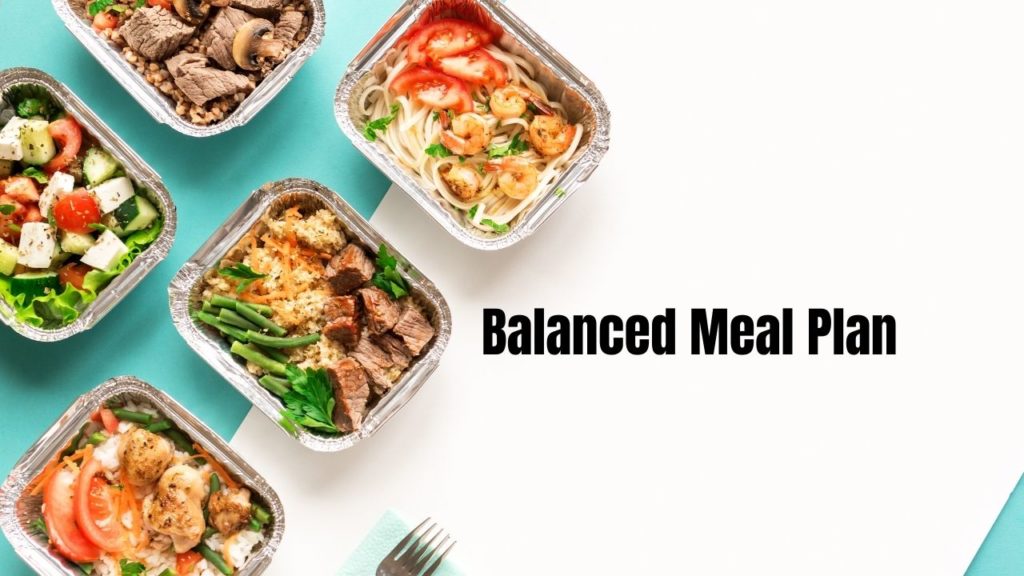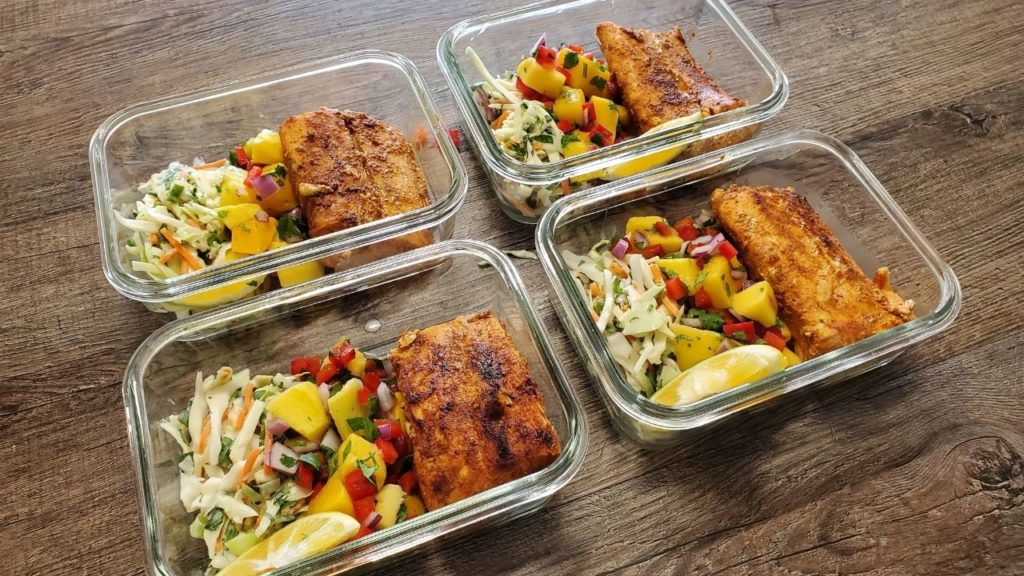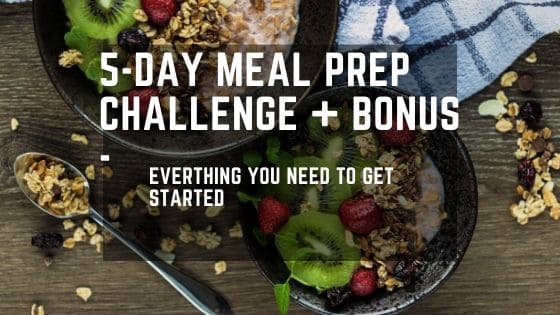Last Updated on January 17, 2022 by TheMealPrepNinja
Meal plan based on macros
Do you want to know how the meal plan based on macros? Meal planning can be a daunting task for most people, especially when meal plans are based on macronutrients. First of all, you need to determine what your macros are and then find meal ideas that fit within those numbers. It’s not as simple as just eating whatever diet plan you choose. There is more to it than that! In this blog post, we will discuss how to meal plan based on macros by giving tips for what should you eat based on macro requirements.
What are macros and why should I count them
Macronutrients are the proteins, carbohydrates, and fats that our body needs to function. When counting macros, you are simply keeping track of how much of each type of nutrient you are eating. This way, you can ensure that you are getting the right amount of protein, carbs, and fat for your goals.
There are many reasons why someone might want to count their macros. Maybe you are trying to lose weight and want to make sure you are eating the right amount of calories. Or maybe you are an athlete who wants to ensure they are getting enough protein for muscle growth. No matter what your goal is, tracking macros can be a great way to reach it!
Counting Macros
If you are new to counting macros, there are a few things you need to know. The first is that not all foods are created equal when it comes to macros. For example, a serving of broccoli will have far fewer carbs than a serving of pasta. This means that you will need to be more mindful of what you are eating if you want to hit your macro goals. Another thing to keep in mind is that not all meal plans are created equal. Some meal plans might include high fat, low carb meals and others might be the opposite. Therefore, you will need to decide which meal plan works best for your goals and lifestyle before you begin counting macros!
How do you plan a meal based on macros?
Now that you understand a little bit more about macros, it’s time to learn how to meal plan based on them. The first step is to calculate your macros. You can do this by using an online calculator or by working with a nutritionist. Once you have your numbers, you will need to find meal ideas that fit within those parameters. It’s not as simple as just eating whatever diet plan you choose. There is more to it than that!
There are meal plans based on macros all over the internet and they should be fairly easy to find. You can search for meal planning ideas by using a meal planning template or by simply looking at recipes on my website. No matter what method you use, meal planning based on macros can be a great way to ensure that you are meeting your goals.
Now, let’s talk about what should you eat when meal planning is based on macros!

What should I eat based on macros?
Once you know what your macros are it is time to find meal ideas that fit within those numbers. There are many websites and apps that provide meal plans based on macros, but you can also easily plan your meals by using a meal planning template or simply looking meal prep for recipes! The key is to pick foods that you enjoy eating so that meal prepping isn’t the chore it’s sometimes made out to be.
You should be eating low-calorie-dense food and have a mixture of protein, fat, and carbohydrates.
A meal plan based on macros should include foods like lean proteins, healthy fats, and vegetables. A meal will typically break down to about 20-30% protein (which is what you want), 30-40% carbohydrates (aim for around 20 grams fiber), and the rest coming from fat. There are some exceptions when it comes to meal planning like eating an apple or peanut butter as a snack, but this is what you should aim for in most cases.
This meal plan focuses on getting the right amount of protein and carbohydrates while keeping fat low.
Breakfast: Banana Oatmeal Pancakes (serves two) – ¾ cup oats, ½ mashed banana, ½ cup egg whites, ¼ tsp baking powder
Snack: hard-boiled egg
Lunch: Turkey and cucumber sandwich on whole wheat bread
Snack: apple with peanut butter
Dinner: Grilled chicken with asparagus and quinoa
There are many meal ideas that fit within the parameters of a meal plan based on macros and they can be easily tailored to your own personal preferences. The key is to find foods that you enjoy eating so meal prepping doesn’t feel like a chore. And, most importantly, remember to calculate your macros before you get started!
It is imperative that you keep it simple. The simpler you make it, the easier it will be to stick with it.
If you are looking for a 2500 calorie meal plan that works don’t forget to check it out.
How to build a balanced meal plan

You can build a balanced meal plan by incorporating a variety of food groups into your diet.
When it comes to meal planning, you don’t want to just stick to one type of food group. A balanced meal plan should include a variety of different food groups so that you’re getting the nutrients your body needs. This way, you won’t get bored with your menu and you’ll be less likely to cheat on your diet.
There are a few different food groups that you should focus on when meal planning. These include protein, carbohydrates, and healthy fats. Protein is essential for building muscle and keeping you feeling full throughout the day. Carbohydrates are important for providing energy, while healthy fats help to keep you satiated.
When putting together your meal plan, aim to include foods from all three of these groups. This way, you’ll be sure to get the nutrients your body needs and you won’t get bored with your food choices. A balanced meal plan doesn’t have to be complicated and it can easily be tailored to your own personal preferences.
How do you do the 40 30 30 diet?
40 30 30 diet is a macro-friendly way to balance meal prepping and meal planning.
The 40/30/30 diet is a macro-friendly way to meal prep and meal plan that works by:
– Eating about 40% of your calories from carbohydrates (with a portion coming from fiber)
– Eating 30% of your calories each day as protein, with some fat too!
This is a great way to make sure you’re getting the right balance of nutrients, and it’s a way to meal prep without having to plan every single meal. Just make sure that your snacks fit within these caloric parameters, and you’ll be good to go!
A great thing about this diet is that it’s very flexible. You can easily adjust the percentages if you need to, or you can meal prep by meal planning meals that fit within these parameters. Either way, meal prepping will be a lot easier with this macro-friendly diet!
There are many different ways to meal plan and it’s important to find an approach that works for you.
In order to have good nutrition when food shopping, meal planning, meal prepping or eating out it’s important to have a meal plan based on macros. Start by finding how many calories you should eat per day and then figure out your macronutrient ratios of protein, carbohydrates, and fats. Now that you know the numbers for each meal just find some recipes.
Examples of macro meal plans
Here are some examples of macro-friendly meal plans that you can meal prep or meal plan based on.
Breakfast: oatmeal with almond milk, blueberries, protein powder, and peanut butter
Snack: hard-boiled eggs
Lunch: quinoa salad with avocado, peas, red onion, grill chicken and bell pepper
Dinner: spaghetti squash pizza (no cheese) and a side of mixed vegetables like broccoli, carrots, and green beans
Snack: Protein oatmeal chocolate chip cookies (no butter)
Breakfast: smoothie with spinach, banana, apple juice, or milk. You can also add blueberries or strawberries for some more flavor!
Lunch: chicken salad sandwich on whole-wheat bread with lettuce and tomato; side of fruit.

What should macros be for 1500 calorie diet?
If you’re following a 1500 calorie diet, your macros should be approximately:
– Protein: 75 grams
– Carbs: 125 grams
– Fat: 37.50 grams
This isn’t set in stone, and you may need to adjust these numbers depending on your own individual needs. But this is a good starting point to help you meal plan and meal prep based on macros. Just make sure that your snacks fit within these caloric parameters, and you’ll be good to go!
Remember that it’s important to find an approach to meal planning that works for you. There are many different ways to meal plan, so find the one that best suits your needs and lifestyle. With a little bit of planning, you can easily meal prep and meal plan based on macros!
Now that you know how to meal plan and meal prep based on macros, it’s time to get started! Just remember to start small and gradually add more recipes and meals to your repertoire. And most importantly, have fun with it!
In Conclusion
Meal planning is a great way to take control of your diet and nutrition. It can be easy with the right guide, like this one! We hope you found it useful – if so, share our post on social media or send out an email to friends who would find these tips helpful too. Ready for some meal ideas? Here are three sample weekly plans that will help you meet all your macros goals while still satisfying cravings.
Jim Lopez, the founder and editor of The Meal Prep Ninja, shares his journey from a passionate bodybuilder and fitness enthusiast to a certified nutrition coach. Certified by Precision Nutrition, Jim aims to empower others with knowledge on meal prep and nutrition, offering resources for busy individuals to enjoy low-calorie, tasty foods. His blog is a community for sharing healthy eating habits and meal prep recipes



